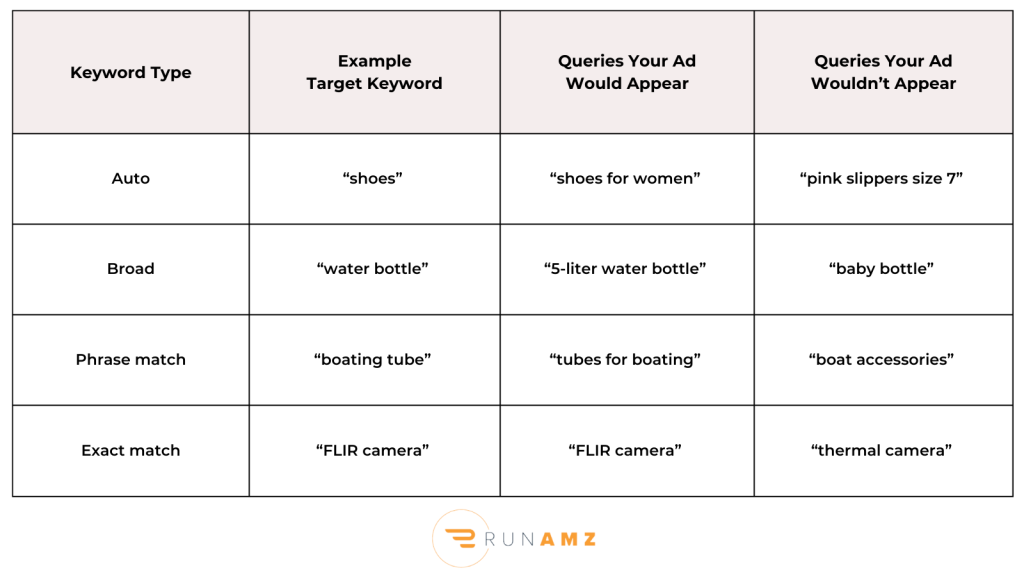Advertising is key to any Amazon seller’s success, especially for brands that are new to the marketplace. Investing in an Amazon advertising campaign strategy can help build your brand’s reputation on the platform, placing your product and name in front of shoppers who may not have found you otherwise. Especially for new sellers, it’s nearly impossible to compete against household-name brands organically – but with the help of Amazon advertising keywords, you can show up above competitors.
Studies have shown that 44% of Amazon shoppers will only scroll 2 pages or less in the search results, meaning you need to have a top slot – whether paid or organically – to generate sales for a given keyword. Plus, with over 353 million products across the Amazon marketplace, competition is more intense than ever. The good news is you don’t have to spend too much money on ads to get results – you just need to discover which keywords are best to target in your campaigns.
4 Types of Keywords to Target
There are 4 types of keywords to target in your sponsored ad campaigns:
- Auto keywords
- Broad match keywords
- Phrase match keywords
- Exact match keywords
Auto Keywords
Auto keywords are based on your product listings and help you discover new keywords given what customers are searching for. You can set up auto campaigns for all your products and simply let them run indefinitely with a manageable budget. We recommend setting the bids on your auto campaigns as low as you can while still generating conversions. This allows your campaigns to do keyword discovery for you while still maintaining sales.
Broad Match Keywords
Broad match keywords take broad terms and match them to related searches. For example, if the product you’re advertising is a water bottle cage for bikes, you may have a broad match keyword like “water bottle”. Shoppers will see your ad show up when searching for things like:
- “5-liter water bottle”
- “Squeeze bottle for water”
- “Bike water bottle holder”
- “Water bottle cage for bikes”
Auto and broad keywords help generate new impressions and attract new audiences, but you won’t have perfect control over the search terms on which they appear. Keep a close eye to avoid overspending.
Phrase Match Keywords
Phrase match keywords are those with your target keywords put into any order. Whenever a shopper types a keyword that’s like yours – for example, with additional words or the same words in a different variation – your ad will show up. For example, if you’re targeting the phrase match keyword “boating tube”, your ad may appear for queries such as:
- Boating towable tube
- Towable tube for boating
- Boating tubes
- Tubes for boating
Phrase match keywords fall between broad match and exact match. They’re more specific than broad match because your ad will only appear for similar queries, but not as restrictive as exact match.
Exact Match Keywords
Exact match keywords are those that exactly match what shoppers searched on Amazon. If you’re targeting an exact match keyword your campaign will only show up if that specific term is searched for; it needs to be an exact search. For example, if you have “shoes” as an exact match keyword and someone searches for “shoes” your ad won’t show up. This doesn’t mean you should exhaust yourself by adding all keyword variations with plurals or misspellings – that’s what your broad match keywords are for.
Exact match keywords typically guarantee high conversion rates.
A good rule of thumb is to include branded search terms in your exact keyword list. It might seem odd to pay for your own name – people who search your brand were already going to buy your product, right? Well, that isn’t necessarily the case. What if someone searches for your brand and your competitors’ products are the first to show up? Having a top slot on Amazon is crucial to maintaining strong sales. It’s also good to keep a handful of terms your competitors are using in your exact keyword list. You can keep the bids on these low as you are simply looking to show up in these searches every so often to find a low hanging fruit customer.
You should strictly control the ACoS (advertising cost of sale) of your exact match keywords. Exact campaigns are where you can perfectly control ad spend because you know the search terms triggering your ads. For example, if one of your exact match keywords was ‘Your Brand and Your Top Product’ (e.g. “FLIR camera”) and it had a 20% conversion rate with a 5% ACoS, this would be a really strong keyword that you’d want to protect. In cases like this, continue bidding on branded keywords to keep your products appearing in branded searches.
Amazon Negative Keywords
There are 2 options for any of your Amazon search terms: turn them into a manually targeted keyword (to better control bids) or mark them as a negative keyword. Negative keywords are search terms that you forbid Amazon from serving your ads on. They are typically searches that use your target keyword but are unrelated to your product. For example, if you sell glass mixing bowls you may exclude terms like “mixing bowls for camping” or “plastic mixing bowls”. You can view your Amazon negative keyword list in your Search Term Report.

Conclusion
Your Amazon keyword targeting strategy will likely include all 4 types of keywords. Remember that your brand should be promoted somewhere on the first or second page of the search results, either paid or organically, because nearly half of Amazon shoppers won’t scroll past page 2 after conducting a search. One of the best ways to guarantee your spot is with Amazon keyword targeting.
Here’s an overview of the 4 keyword types and some examples of queries:

